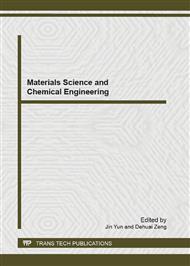[1]
E. Mathiowitz, J.S. Jacob, Y.S. Jong, G.P. Carino, D.E. Chickering, P. Chaturvedi, C.A. Santos, K. Vijayaraghavan, S. Montgomery, M. Bassett, C. Morrell, Nature 386 (1997) 410-414.
DOI: 10.1038/386410a0
Google Scholar
[2]
S.M. Marinakos, J.P. Novak, L.C. Brousseau III, A.B. House, E.M. Edeki, J.C. Feldhaus, D.L. Feldheim, J. Am. Chem. Soc. 121 (1999) 8518-8522.
DOI: 10.1021/ja990945k
Google Scholar
[3]
S.W. Kim, M. Kim, W.Y. Lee, T. Hyeon, J. Am. Chem. Soc. 124 (2002) 7642-7643.
Google Scholar
[4]
P.H.R. Keen, N.K.H. Slater, A.F. Routh, Langmuir 28 (2012) 1169-1174.
Google Scholar
[5]
H.N. Yow, X. Wu, A.F. Routh, R.H. Guy, Eur. J. Pharm. Biopharm. 72 (2009) 62-68.
Google Scholar
[6]
S.H. Im, U. Jeong, Y. Xia, Nat. Mater. 4 (2005) 671-675.
Google Scholar
[7]
M. Fuji, C. Takai, Y. Tarutani, T. Takei, M. Takahashi, Adv. Powder Technol. 18 (2007) 81-91.
Google Scholar
[8]
M. Fujiwara, K. Shiokawa, Y. Tanaka, Y. Nakahara, Chem. Mater. 16 (2004) 5420-5426.
Google Scholar
[9]
T. Nomura, A.F. Routh, Langmuir 26 (2010) 18676-18680.
Google Scholar
[10]
P. Roy, G. Bertrand, C. Coddet, Powder Technol. 157 (2005) 20-26.
Google Scholar
[11]
S. Nagamine, A. Sugioka, Y. Konishi, Mater. Lett. 61 (2007) 444-447.
Google Scholar
[12]
Y.S. Chung, J.S. Lim, S.B. Park, K. Okuyama, J. Chem. Eng. Jpn. 37 (2004) 1099-1104.
Google Scholar
[13]
H. Zhou, T. Fan, D. Zhang, Q. Guo, H. Ogawa, Chem. Mater. 19 (2007) 2144-2146.
Google Scholar
[14]
H. Zhou, T. Fan, D. Zhang, Micropor. Mesopor. Mat. 100 (2007) 322-327.
Google Scholar
[15]
B. Bai, P. Wang, L. Wu, L. Yang, Z. Chen, Mater. Chem. Phys. 114 (2009) 26-29.
Google Scholar
[16]
L. Yang, W. Guan, B. Bai, Q. Xu, J. Alloy. Compd. 504 (2010) L10-L13.
Google Scholar
[17]
B. Bai, W. Guan, Z. Li, G.L. Puma, Mater. Res. Bull. 46 (2011) 26-31.
Google Scholar
[18]
D. Weinzierl, A. Lind, W. Kunz, Cryst. Growth Des. 9 (2009) 2318-2323.
Google Scholar
[19]
T. Nomura, Y. Morimoto, H. Tokumoto, Y. Konishi, Mater. Lett. 62 (2008) 3727-3729.
Google Scholar
[20]
T. Nomura, Y. Morimoto, H. Tokumoto, Y. Konishi, Adv. Powder Technol. 21 (2010) 218-222.
Google Scholar
[21]
U.G. Akpan, B.H. Hameed, J. Hazard. Mater. 170 (2009) 520–529.
Google Scholar
[22]
X. Chen, S.S. Mao, Chem. Rev. 107 (2007) 2891–2959.
Google Scholar
[23]
T. Nomura, M. Alonso, Y. Kousaka, K. Tanaka, J. Colloid Interface Sci. 203 (1998) 170-176.
Google Scholar
[24]
Y. Kousaka, T, Nomura, M. Alonso, Adv. Powder Technol. 12 (2001) 291-309.
Google Scholar


